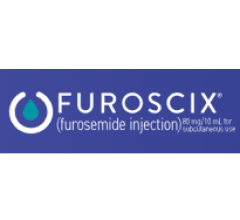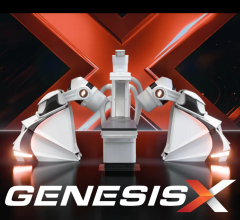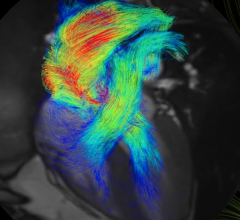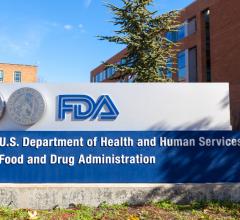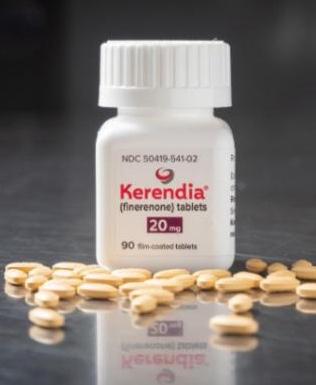
July 14, 2025 — Bayer has announced that the U.S. Food and Drug Administration (FDA) approved KERENDIA (finerenone) to treat patients with heart failure (HF) with left ventricular ejection fraction (LVEF) ≥40%,1 following the agency’s Priority Review of its supplemental New Drug Application (sNDA).
Even with guideline-directed medical treatment, the approximately 3.7 million adults in the U.S. with HF with LVEF ≥40%, also known as mildly reduced ejection fraction (HFmrEF) and preserved ejection fraction (HFpEF), face high rates of hospitalization for HF, impacting survival and placing considerable strain on healthcare systems.2 Each hospitalization is associated with a more than two-fold increase in patients’ risk of cardiovascular (CV) death.3
The approval was based on results from the Phase III FINEARTS-HF trial, which showed that, on top of standard of care, KERENDIA achieved a 16% relative risk reduction of the composite primary endpoint of CV death and total HF events, defined as hospitalization for HF or an urgent HF visit, compared to placebo on top of standard of care (RR=0.84, 95% CI: 0.74-0.95, p=0.007).1 The treatment effect was consistent across all prespecified subgroups including with or without SGLT2i use. 1
KERENDIA is a non-steroidal mineralocorticoid receptor antagonist (nsMRA) that selectively and potently blocks mineralocorticoid receptor overactivation in the heart and kidneys,1,4,5 taking aim at HF with LVEF ≥40% from a different angle.1
The overall safety profile of KERENDIA was consistent across all studied indications.1 From FINEARTS-HF, the adverse reactions reported in ≥1% of patients on KERENDIA and more frequently than placebo were hyperkalemia (9.7% vs 4.2%), hypotension (7.6% vs 4.7%), hyponatremia (1.9% vs 0.9%),6 and events related to worsening renal function (18% vs 12%).1
Detailed results from the Phase III FINEARTS-HF trial were published in the New England Journal of Medicine.7
“The FDA’s approval of finerenone expands treatment options for patients with heart failure with a left ventricular ejection fraction of ≥40% – a large and growing group of patients with a poor prognosis,” said Scott D. Solomon, MD, Professor of Medicine, Harvard Medical School, Director, Clinical Trials Outcomes Center, Mass General Brigham, and Chair of the Executive Committee for the FINEARTS-HF study. “Based on the clinical efficacy we saw in the FINEARTS-HF study, finerenone can become a new pillar of comprehensive care.”
“People with heart failure with left ventricular ejection fraction ≥40% face the very real possibilities of hospitalization for heart failure or CV death due to their disease,”2,3 said Alanna Morris-Simon, MD, MSc, Senior Medical Director of U.S. Medical Affairs at Bayer. “Even with current treatments, 21% of patients with symptomatic heart failure escalate to hospitalization for heart failure or CV death,8 and 25% who experience hospitalization are readmitted due to heart failure within one year of discharge.9 Now, as a core pillar of treatment, KERENDIA can help patients reduce these risks.”
Since July 2021, KERENDIA has been approved to reduce the risk of CV death, hospitalization for HF, non-fatal myocardial infarction (MI), sustained estimated glomerular filtration rate (eGFR) decline, and end-stage kidney disease in adult patients with chronic kidney disease (CKD) associated with type 2 diabetes (T2D).1 This new indication expands KERENDIA’s established cardiovascular benefit to a new patient population not limited to CKD associated with T2D—adult patients with HF with LVEF ≥40%.1
For more information, go to www.bayer.com.
- Bayer Pharmaceuticals. Kerendia (finerenone) [package insert]. U.S. Food and Drug Administration. Available at: https://www.accessdata.fda.gov/drugsatfda_docs/label/2021/215341s000lbl.pdf. Accessed July 1, 2025.
- Bozkurt B, Ahmad T, Alexander K, et al. HF STATS 2024: Heart Failure Epidemiology and Outcomes Statistics An Updated 2024 Report from the Heart Failure Society of America. J Card Fail. 2025;31(1):66-116. doi:10.1016/j.cardfail.2024.07.001
- Huusko J, et al. ESC Heart Fail. 2020;7(5):2406-2417. doi:10.1002/ehf2.12792.
- Kolkhof P, Jaisser F, Kim SY, Filippatos G, Nowack C, Pitt B. Steroidal and Novel Non-steroidal Mineralocorticoid Receptor Antagonists in Heart Failure and Cardiorenal Diseases: Comparison at Bench and Bedside. Handb Exp Pharmacol. 2017;243:271-305. doi:10.1007/164_2016_76. Available at https://link.springer.com/chapter/10.1007/164_2016_76. Accessed July 1, 2025.
- Kolkhof P, Joseph A, Kintscher U. Nonsteroidal mineralocorticoid receptor antagonism for cardiovascular and renal disorders - New perspectives for combination therapy. Pharmacol Res. 2021;172:105859. doi:10.1016/j.phrs.2021.105859. Available at https://www.sciencedirect.com/science/article/pii/S1043661821004436?via%3Dihub. Accessed July 1, 2025.
- Data on file.
- Solomon SD, McMurray JJV, Vaduganathan M, et al. Finerenone in Heart Failure with Mildly Reduced or Preserved Ejection Fraction. N Engl J Med. 2024;391(16):1475-1485. doi:10.1056/NEJMoa2407107.
- Chatur S, Vaduganathan M, Claggett BL, et al. Outpatient Worsening Among Patients With Mildly Reduced and Preserved Ejection Fraction Heart Failure in the DELIVER Trial. Circulation. 2023;148(22):1735-1745. doi:10.1161/CIRCULATIONAHA.123.066506
- Cheng RK, et al. Am Heart J. 2014;168(5):721-730. doi:10.1016/j.ahj.2014.07.008.


 December 09, 2025
December 09, 2025 

